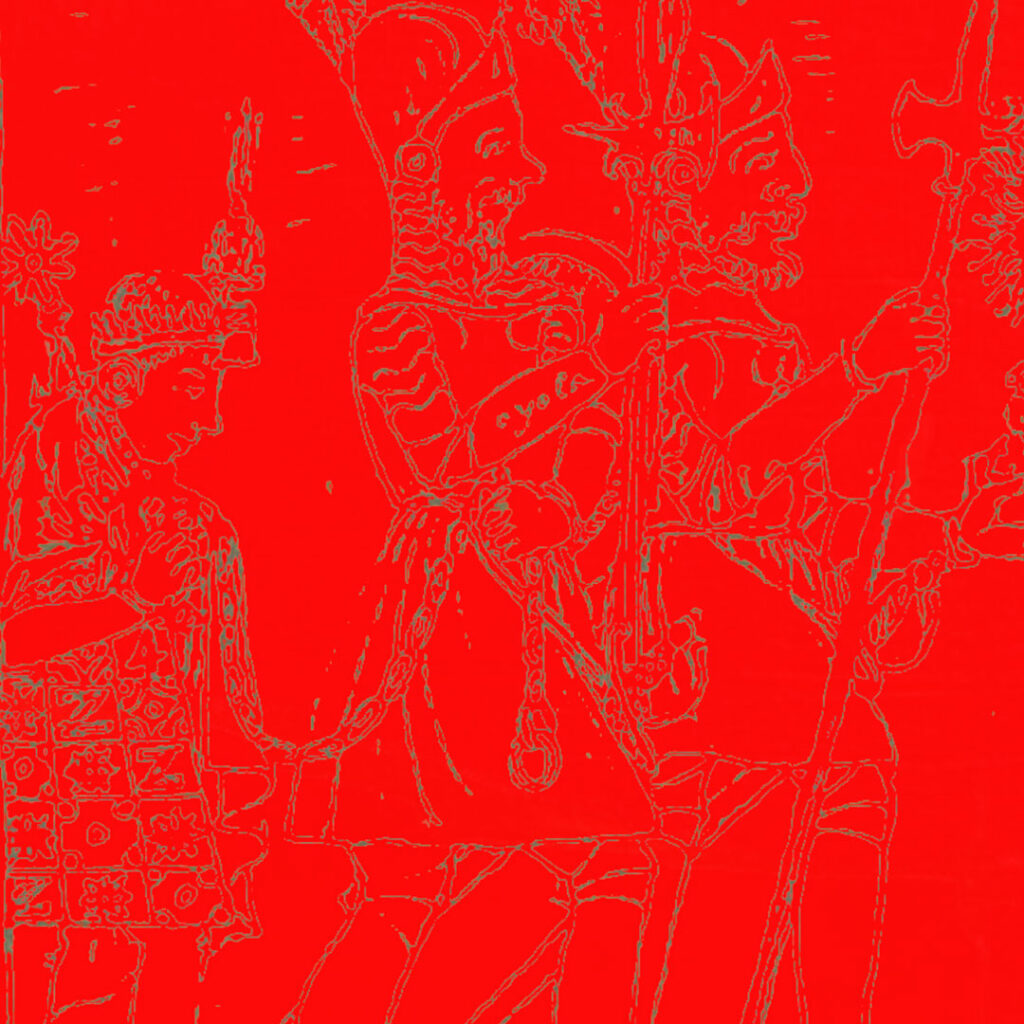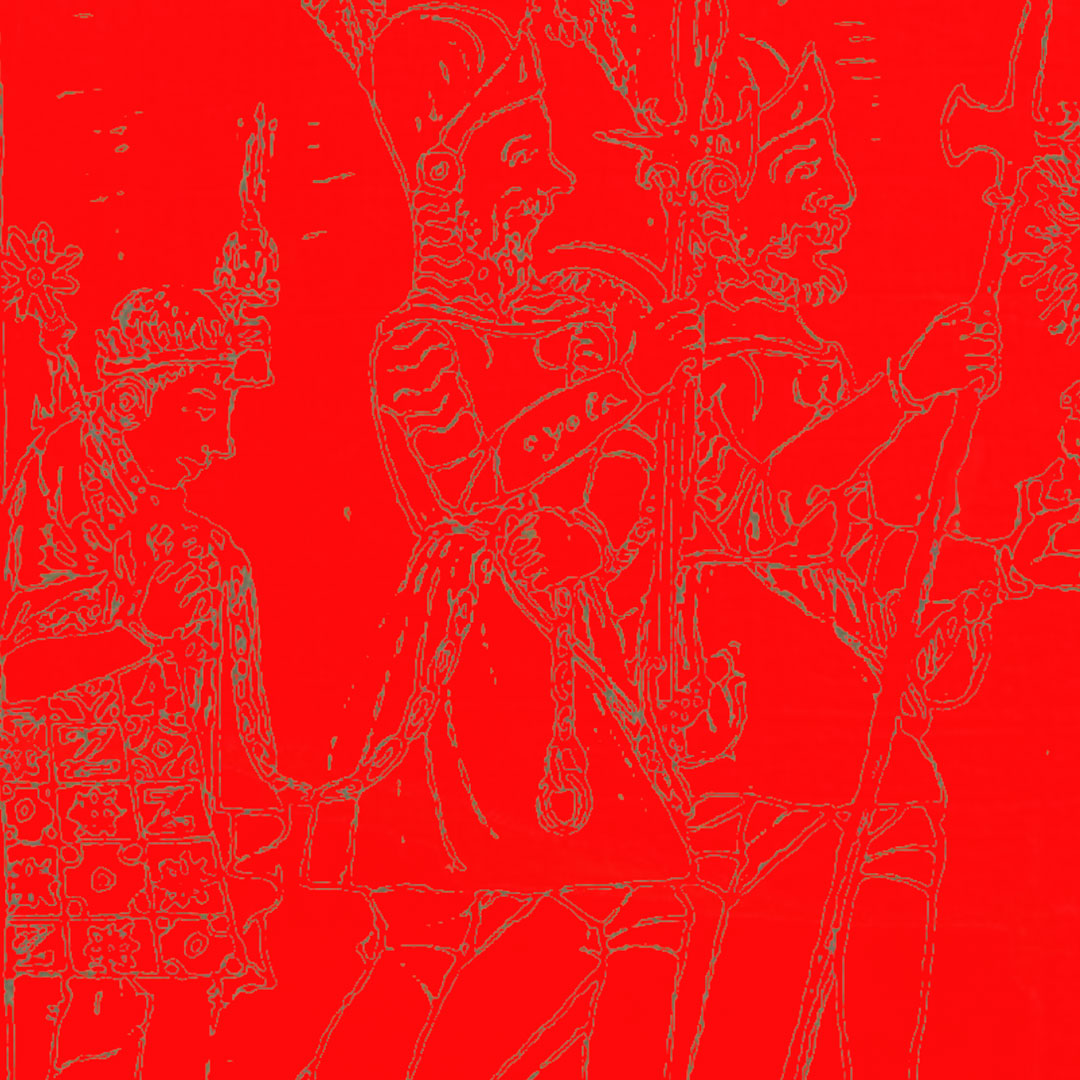Performance
Performance
Sunik writes compellingly on Korean shamanism and Communism, and—in the music of Conlon Nancarrow—the possibility of technology to create “a strange new vibration to the world that seems to contain the seed of everything, processes and trajectories as yet unseen?” From this materialist analysis, Sunik extrudes a similar approach to sound, a testing of the limits of computer music in which dense blocks of sonic material—textures, timbres, rhythms—are evolve in relation to each other as they’re stretched both vertically and horizontally, to somehow produce a kind of synthesis in which the transformation of that sonic material mirrors the potential to transform the material world.
Experiencing this music live recently, at a physicality and volume through which you can really listen into its depth and be subsumed within its sonic materiality—a depth that has a fractal quality, in which its seems like you could always listen/ lean deeper into more and more detail—I ended up in a half danced reverie, wondering how, instead of insisting on resolutions into binary oppositions (as per the Western political norm), this sonic approach exemplifies a practice of back and forth, a folding and unfolding that allows us to focus on transits between materials and their transformations. This is the kind of understanding that emerges from what the mathematician Alexander Grothendieck called ‘listening to the voice of things’. Listening to Sunik’s music feels like this: an unpicking of the normative prescription to order, and the revealing instead of how, as Cedric Robinson or Fred Moten might say, we are all are equally incomplete.
Check out the degree to which Sunik’s work impacts on other experimental musicians:
…a rare honest response to the disaster capitalist era of the apparent nearing end of the anthropocene, a cyborg music which is not hopelessly psychotic like so much contemporary and especially computer-requiring music, but lucidly possessed with rapture, pain, madness, empathy, ecstasy, torment, fragility…This sound is a blistering Electro Magnetic Pulse wave of revolutionary hope, exclaiming defiantly that History is not over, that the future is not ‘history,’ that there is still a vast multitude of ideas and identities burning brightly and resiliently, despite the fact that they are inconceivable to the tyrannical Hegemonic axis of global capitalist tech-culture.
Gretchen Aury
Listening to Sunik Kim gives me something I have never experienced before: a conscious encounter with history making music…There are forms of density one is not allowed to enter. But Sunik’s density is the opposite: you are not only allowed to enter, you are also there together with the audience entering and deciphering hundreds of layers of musical history. One is inside a cultural grinder of possibilities destroying those forms of closed density and projecting us into a potential collective future. You can think here of a computerized 21st century version of Cecil Taylor, a chunk of our vertiginous reality condensed into a million musical fragments: the frenetic exuberance of life made music.
Mattin
The music programme at Episode 11 has emerged as a collaboration with the UK’s best experimental music festival, Counterflows
Check out Sunik’s thinking via Mudang and Revolution: Korean Shamanism and the Role of Culture in the Struggle for Reunification about Korean shamanism and the Korean struggle for revolution and reunification and the complex relationship between cultural and political work. Or The Dark Filter of Sound: Timestretching, Eroticism and Reification about the trans/homoerotics of the “timestretch” and its potential to restore the connection between artwork and the world, in the work of Barry Truax, Dillinja, Black Electric, Jana Rush, Chantal Akerman, Jacques Rivette, Abel Ferrara, Marcel Proust and Virginia Woolf.
ReadBio
Sunik Kim is a musician, writer and filmmaker currently based in Los Angeles. Sunik’s music is often described as “a frenzied electronic orchestra that sits somewhere in between free jazz, noise, and Korean shamanic music.” Their writing on subjects ranging from Korean communism to Conlon Nancarrow has been featured in The Wire Magazine, Pitchfork, Bandcamp Daily, Tone Glow and elsewhere. Their latest album, Tears of Rage, was released on Seoul-based label Rope Editions in 2024.

▴ Natalia Goncharova, Harvest Angels Throwing Stones on the City, 1911

▴ Tears of Rage, Credit: Sunik Kim

▴ Kazimir Malevish, Town, 1910
Access
Live Stream
Subpac
Ear Protection
This event will have sections that are at a loud volume. Ear Plugs will be available on the door. A number of Ear Defenders, will also be available, first come first served on the door.
See general Access information for Episode 11: To End the World As We Know It event
Artists


